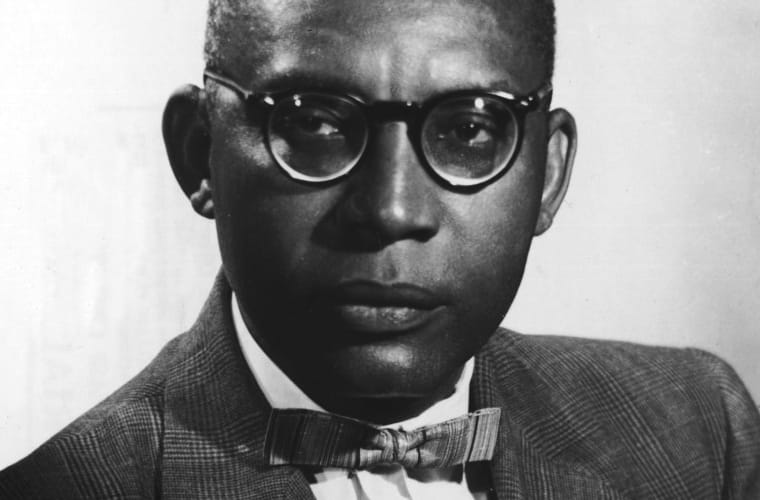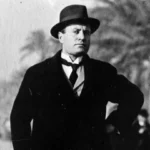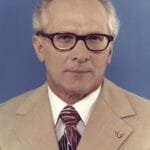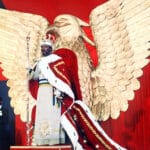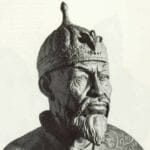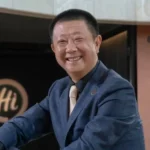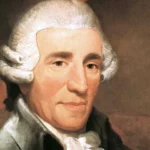Prepare to be captivated by the chilling account of François Duvalier’s reign in Haiti. Like stepping into a historical thriller, we’ll unravel the enigma of his rule, exposing the fear he instilled and the shocking truths behind Papa Doc’s iron grip.
Mind-Blowing Facts About François Duvalier’s Reign
François “Papa Doc” Duvalier, Haiti’s president from 1957 to 1971, wasn’t your average leader. He remains a controversial figure, his time in power forever linked to its darker side. Let’s plunge into the most startling facts of his reign – an era that left Haiti grappling with fear and sorrow.
- Voodoo in the Government? Imagine a leader using deeply rooted spiritual traditions to tighten his control. That was Duvalier. He claimed to communicate with spirits, even hinting he might be one himself! This wasn’t just for show; it was a calculated move to instill fear in a populace who believed in supernatural repercussions.
- “Papa Doc, the Superhero” Posters Everywhere! Okay, maybe not superhero posters, but Duvalier’s image was everywhere. He wanted to be seen as almost god-like, demanding absolute loyalty. These images weren’t just decoration; they were tools to reinforce his power.
- The Tonton Macoutes: Your Worst Nightmare. Picture a group without uniforms, lurking in the shadows – that was the Tonton Macoutes, Duvalier’s personal enforcers. They were the stuff of nightmares, known for torture, arbitrary imprisonment, and even extrajudicial killings. Speaking your mind in Haiti during this time was unthinkable.
- Speaking Up? You Wouldn’t Dare. Under Duvalier, forget about disagreeing with the government. Those who dared faced horrific consequences – imprisonment, forced exile, or even death. Silence and fear became the norm.
- Haiti Gets Poorer, Duvalier Gets Richer. Here’s the heartbreaking reality: while most Haitians battled poverty, Duvalier and his cronies lived extravagantly. Corruption was rampant, with widespread suspicion that he was lining his own pockets at the country’s expense.
- The World Looks Away. You’d think the world would intervene, right? Even though Duvalier’s human rights abuses were no secret, countries like the US and France maintained ties with Haiti. Why? Haiti’s strategic location during the Cold War made it a pawn in a global chess game, often overshadowing human rights concerns.
- Like Father, Like Son? When Duvalier died, his son, Jean-Claude (“Baby Doc”), took over. Tragically, not much changed. The dictatorship continued until the Haitian people finally revolted in 1986, forcing “Baby Doc” out of power.
- Scars That Run Deep. Imagine living under constant threat. That was reality for many Haitians under Duvalier. Today, the fear and distrust he fostered still linger, impacting social interactions and views of government. It’s a stark reminder of trauma’s long-lasting impact on a nation’s psyche.
- Hero or Villain? The Debate Continues. Even today, opinions about Duvalier are mixed. Some argue he implemented policies that benefited Haiti’s poor, while others believe he was a cruel dictator. It’s a reminder that history is often painted in shades of gray, defying easy categorization.
- A Global Lesson. Duvalier’s rule serves as a chilling example of unchecked power’s potential consequences. It’s a stark reminder that human rights are paramount, demanding constant vigilance and protection, both domestically and globally.
What were the facts about the Duvalier regime?
François “Papa Doc” Duvalier’s dictatorship didn’t happen overnight. He was calculated and ruthless in seizing absolute control. He systematically eliminated any opposition and instilled terror through the Tonton Macoute, his secret police. Imagine living in a place where even a whisper of dissent could have deadly consequences – that was Haiti under Papa Doc.
He didn’t rely solely on force, however. Papa Doc was a master manipulator, employing propaganda and even leveraging voodoo rituals to cultivate an almost god-like persona. He wasn’t content with simply leading; he craved veneration. This ambition culminated in him declaring himself “President for Life.”
The Duvaliers, like many dictatorships, were a family affair. They amassed immense wealth, effectively robbing their own nation while most Haitians struggled to survive. Their control extended to businesses, ensuring a steady flow of money into their own coffers.
Sadly, Papa Doc’s death in 1971 didn’t bring about the change many hoped for. His son, Jean-Claude “Baby Doc”, assumed power. While he initially attempted to project a more approachable image, the reality was a continuation of his father’s oppressive policies. It took years of relentless protests by the Haitian people, coupled with mounting international pressure, before Baby Doc finally fled in 1986.
The legacy of the Duvalier years continues to cast a long shadow over Haiti. Decades of fear, stifled dissent, and rampant corruption have had a devastating impact on the nation’s psyche, its economy, and its trust in governance.
The Duvalier regime serves as a cautionary tale. It reminds us of the importance of remaining informed, of raising our voices against injustice, and of actively working towards a world where such atrocities are consigned to the history books.
When did Duvalier leave Haiti?
February 7th, 1986. This wasn’t just another day; it marked the end of an era, the day Jean-Claude Duvalier fled Haiti. After decades under the oppressive rule of the Duvalier dynasty, a collective sigh of relief swept across the nation.
Duvalier’s departure wasn’t a random act. Haiti was a powder keg of unrest. The economy was in shambles, and the populace was fed up with his mismanagement and corruption. Protests erupted, signaling that the situation was reaching a boiling point.
It’s widely believed that the United States, under President Reagan, played a pivotal role in Duvalier’s decision to flee. International pressure was mounting, and Duvalier had become a liability on the world stage. Faced with these pressures, he boarded a plane to France, leaving behind a legacy of oppression.
While Duvalier’s departure marked the end of his reign, Haiti was left reeling from the effects of his rule. Decades of his iron-fisted policies had left the country in disarray. The road to recovery and rebuilding trust would be long and arduous.
The Duvalier era continues to intrigue historians and researchers today. New information emerges, reminding us that history’s impact extends far beyond specific dates and events. It’s a stark reminder of the enduring consequences of unchecked power and the importance of safeguarding human rights.
Who Overthrew Jean-Claude Duvalier?
Jean-Claude Duvalier’s removal from power wasn’t the result of a single hero or a coordinated coup; it was the culmination of years of simmering discontent finally boiling over.
For years, Haitians endured a brutal reality under his rule: corruption was rampant, human rights abuses were commonplace, and the gap between the rich and the poor grew into an unbridgeable chasm. The Haitian people were tired of living in fear and deprivation.
The situation escalated when Duvalier’s government implemented austerity measures aimed at addressing the country’s economic woes. For everyday Haitians, these measures only intensified their hardship, pushing them to the brink.
That’s when the protests began. Students, workers, families – people from all walks of life – took to the streets to demand change. Their calls for Duvalier’s removal grew louder and more unified.
The international community, witnessing the turmoil engulfing Haiti, began to exert pressure on Duvalier. Countries threatened aid cuts and sanctions, signaling that his continued rule was untenable.
In the face of mounting internal and external pressure, Duvalier realized his grip on power had slipped. In 1986, he fled Haiti, seeking refuge in exile.
The Haitian people, through their collective voice and unwavering determination, had brought down a dictator. It was a historic moment, marking the end of the Duvalier dynasty and the beginning of a new chapter for Haiti. The road ahead would be fraught with challenges, but the spirit of the Haitian people had prevailed.
Where is Papa Doc buried?
François “Papa Doc” Duvalier’s final resting place is shrouded in mystery, much like the man himself. While he’s widely believed to be buried in the Grand Cimetiere in Port-au-Prince, Haiti, the truth is far less clear-cut.
Adding to the intrigue are Papa Doc’s own actions. Despite vehemently promoting a “Black Power” agenda, he married Simone Ovide, a woman of mixed race. Even more tellingly, he named his mixed-race son, Jean-Claude “Baby Doc” Duvalier, as his successor – a move laden with symbolism in a nation grappling with racial tensions.
Duvalier’s reign was one of terror, enforced by the chilling presence of the Tonton Macoute, his notorious death squad. This shadowy group, feared for its brutality, silenced any opposition. Their actions, marked by countless disappearances and killings, left an indelible scar on the nation’s psyche.
However, Papa Doc wasn’t merely a brute; he was a master manipulator. He cultivated a cult of personality, weaving fear and Haitian mythology into his self-presentation, creating an aura that kept the population in check until his death in 1971.
The mystery deepens in 1986 when Papa Doc’s tomb was looted, his remains vanishing. Speculation ran rampant. Was this an act of revenge by his enemies? Or did something more sinister occur? The truth, like the whereabouts of his remains, remains elusive.
What We Know:
- The Grand Cimetiere is the most probable location of Papa Doc’s remains.
- The looting of his tomb introduces doubt and uncertainty.
Unanswered Questions:
- Was his body removed before the looting?
- Were his remains destroyed?
- Are they hidden, awaiting rediscovery?
The quest for Papa Doc’s remains transcends historical curiosity. It delves into the heart of a nation wrestling with the ghosts of its past, a poignant reminder that some mysteries, like some wounds, never truly heal.
Did Haiti have a dictator?
Haiti’s history has been sadly marked by periods of dictatorial rule, and no name casts a darker shadow than François Duvalier, better known as “Papa Doc.” From 1957 to 1971, he ruled Haiti with an iron fist, his regime synonymous with human rights abuses, rampant corruption, and the terror inflicted by his secret police, the Tonton Macoute.
Duvalier’s grip on power was strengthened by his shrewd manipulation. He exploited Haitian folklore and Voodoo beliefs, cultivating an image of himself as a near-deity, the “Protector of the Haitian Race.” This calculated strategy played on deep-seated beliefs and fears, allowing him to maintain an iron grip on the nation.
The Tonton Macoute, his notoriously brutal secret police, became the instrument of his repression. They silenced dissent with ruthless efficiency, resorting to torture, disappearances, and extrajudicial killings. Fear permeated every aspect of life in Haiti, discouraging any form of opposition.
While Haitians endured hardship and oppression, Duvalier and his cronies lived in opulence. They treated the nation’s treasury as their personal bank account, accumulating vast wealth while the people they ruled struggled to survive.
Adding to the tragedy, certain countries, including the United States, supported Duvalier’s regime. Driven by Cold War anxieties and Haiti’s strategic importance, these nations turned a blind eye to the atrocities unfolding under Duvalier’s rule.
The legacy of Duvalier’s dictatorship continues to haunt Haiti. The trauma, the fear, the silencing of dissent – these wounds run deep, impacting the nation’s psyche and hindering its progress.
To make matters worse, upon Papa Doc’s death, his son, Jean-Claude “Baby Doc” Duvalier, took over. While he initially attempted to soften his image, he ultimately continued many of his father’s repressive policies until his own overthrow in 1986.
The Duvalier era serves as a chilling reminder of the dangers of unchecked power and the importance of safeguarding democratic values.
How Big is the Haitian Military?
The Haitian military today is smaller than one might expect, particularly given its tumultuous history.
Current Size:
- Infantry: Approximately 700 soldiers.
- Coast Guard: A small force of around 50 personnel.
Historical Context:
- 1995 Disbandment: The Haitian military was disbanded in 1995 due to its history of political interference and human rights abuses.
- 2018 Reestablishment: In 2018, the military was reinstated in response to growing security concerns within Haiti.
Challenges:
- Funding and Equipment: The Haitian military faces significant challenges due to inadequate funding and a lack of essential equipment, which hinders its ability to fulfill its mandate of ensuring national security.
- Legacy of Past Abuses: Overcoming the legacy of past human rights abuses and establishing trust with the Haitian people remains a significant hurdle for the military.
Hopes for the Future:
- There is hope that as Haiti addresses its internal security challenges, the military will receive increased funding and support, allowing it to play a more effective role in stabilizing the nation.
What happened in Haiti in 1994?
The year 1994 was a pivotal one for Haiti, marked by a US-led military intervention. To understand this event, we need to rewind to 1991 when a military coup ousted Haiti’s democratically elected president, Jean-Bertrand Aristide. This coup plunged the nation into chaos, characterized by widespread human rights abuses.
By 1994, the international community, led by the United States, decided it could no longer stand idly by. Sanctions were imposed on Haiti to pressure the military junta to step down. The United Nations Security Council even authorized the use of military force as a last resort to restore democracy.
This resulted in “Operation Uphold Democracy.” In September 1994, a US-led multinational force intervened in Haiti with the objective of removing the military junta and reinstating President Aristide.
The operation proved swift. The combined forces of the US and Caribbean nations quickly gained control of key locations, leading to the collapse of the military regime within weeks.
This intervention was significant for several reasons:
- Shift in US Foreign Policy: It signaled a potential change in US foreign policy, demonstrating a willingness to use military force not only for national security interests but also to promote democracy and human rights.
- UN Precedent: The UN Security Council authorization marked the first time the UN had authorized the use of force to restore a democratically elected government.
However, the long-term impact of the intervention is still debated. Some argue it contributed to ongoing instability in Haiti, while others believe it was necessary to prevent further human rights abuses. It’s a complex legacy with no easy answers.
What happened in 1980 in Haiti?
By 1980, Haiti was a nation on edge. Decades of rule under the Duvalier dynasty had resulted in a massive gap between the rich and the poor, widespread human rights abuses, and a pervasive climate of fear. The year marked a turning point as simmering tensions began to boil over.
People vs. the Powerful:
The Duvalier regime, notorious for its brutality, had effectively silenced opposition for years. However, economic hardship and the yearning for basic freedoms were pushing the Haitian people to their breaking point.
The Rise of Resistance:
Haitians from all walks of life – students, workers, mothers, fathers – decided they’d had enough. Protests and demonstrations erupted across the country, demanding an end to the dictatorship and a chance at a brighter future.
The World Takes Notice:
Even the United States, which had previously supported the Duvaliers due to Cold War politics, began distancing itself as reports of human rights abuses became impossible to ignore. International pressure joined the chorus of voices demanding change within Haiti.
The Fall of “Baby Doc”:
The pressure reached a climax in 1986. Jean-Claude “Baby Doc” Duvalier, who had taken over from his father, François “Papa Doc” Duvalier, found himself unable to contain the growing unrest. He fled the country, marking the end of his family’s decades-long grip on power.
A New Chapter Begins, But Challenges Remain:
The overthrow of Duvalier was a momentous victory for the Haitian people. However, it was just the first step on a long and arduous journey towards democracy and prosperity. The legacy of the Duvalier regime – a shattered economy, weakened institutions, and a culture of fear – continues to pose challenges for Haiti today.
What was going on in Haiti in the 1950s?
The 1950s in Haiti were a turbulent decade, a story of political upheaval, economic hardship, and the looming shadow of dictatorship.
Political Instability:
- Coups and Dictatorships: The decade began with the overthrow of President Dumarsais Estimé in a military coup. This was followed by a revolving door of leaders, culminating in the rise of François Duvalier, or “Papa Doc,” in 1957. Duvalier’s brutal dictatorship, which would last until his death in 1971, marked a dark chapter in Haitian history.
Economic Hardship:
- Hurricane Hazel: As if political instability wasn’t enough, Haiti was struck by Hurricane Hazel in 1954. The hurricane devastated the nation’s agriculture-dependent economy, exacerbating already high levels of poverty and unemployment.
US Influence:
- A Complex Relationship: The United States played a significant role in Haitian politics during this period. The US had supported the previous president, Paul Magloire, and viewed Duvalier with suspicion initially. However, they eventually provided aid and support to his regime, likely motivated by Cold War concerns about the spread of communism.
Cultural Renaissance Amidst Chaos:
- Art and Literature Flourish: Despite the turmoil, the 1950s witnessed a remarkable blossoming of Haitian art and literature. Artists like Hector Hyppolite and Rigaud Benoit gained international recognition, their vibrant and unique styles capturing the world’s attention. Similarly, writers like Jacques Roumain and Jean Price-Mars explored themes of social injustice and the Haitian identity, their works resonating far beyond the island’s shores.
What happened in Haiti in 1957?
The year 1957 marked a turning point in Haitian history, the year François Duvalier, better known as “Papa Doc,” rose to power. This event would cast a long shadow over the nation, plunging it into one of its darkest chapters.
Duvalier Seizes Control:
- A Nation in Turmoil: Haiti in 1957 was ripe for the picking of a strongman. Political instability and a struggling economy created a climate of uncertainty and fear. It was against this backdrop that Duvalier, a physician by training, maneuvered himself into a position of power.
The Reign of Terror Begins:
- The Tonton Macoute: Duvalier quickly consolidated his power, establishing a ruthless dictatorship. Central to his control was the creation of the Tonton Macoute, a brutal secret police force that operated with impunity. They became the enforcers of his will, silencing any form of opposition through violence and intimidation.
- Censorship and Propaganda: Freedom of speech and the press were swiftly eradicated. Duvalier’s regime controlled the narrative, using propaganda to portray him as a benevolent leader while ruthlessly suppressing any criticism.
- Exploiting Vodou: Duvalier shrewdly used Haiti’s deep connection to Vodou to his advantage. He presented himself as possessing supernatural powers, fueling a climate of fear and unquestioning obedience among the populace.
Consequences:
- The impact of Duvalier’s rule on Haiti was devastating. The country was further impoverished, human rights abuses became the norm, and the very fabric of Haitian society was torn apart. The scars of his dictatorship continue to haunt the nation today.
A Reminder:
- The events of 1957 in Haiti are a stark reminder of the fragility of democracy and the human cost of unchecked power.
Have you ever wondered about the fascinating life of Jerry Jones? Fascinating facts about Jerry Jones is the place you need to visit to know all about him. Are you interested to know some surprising facts about Zhang Yong? Visit Surprising facts about Zhang Yong to gain all the knowledge you need.
